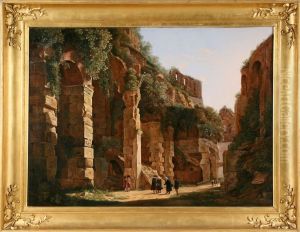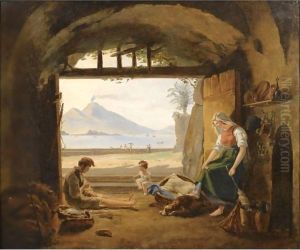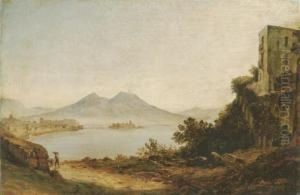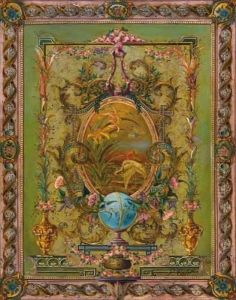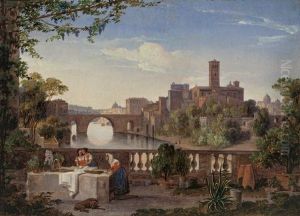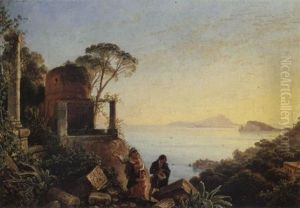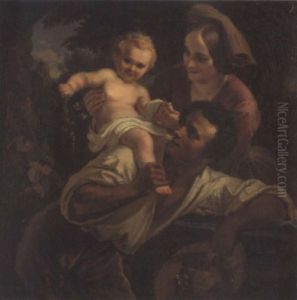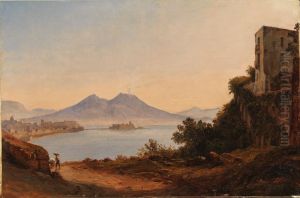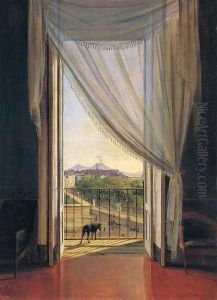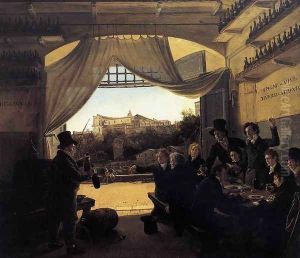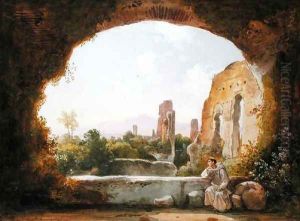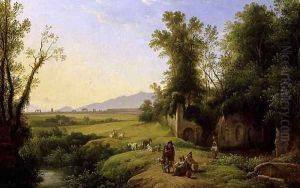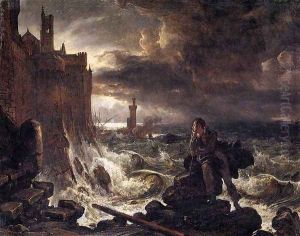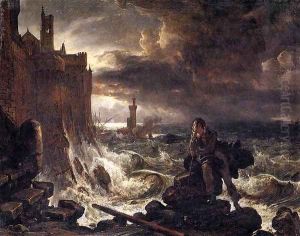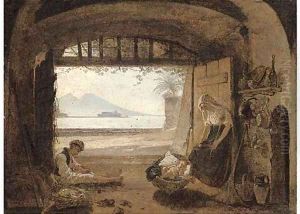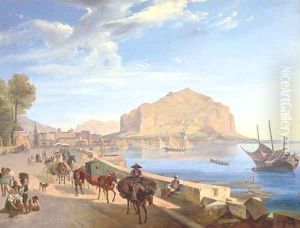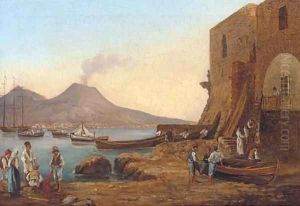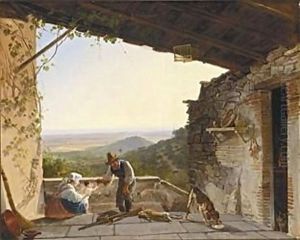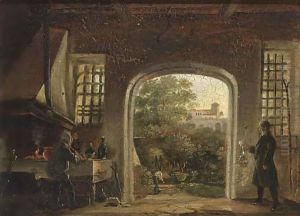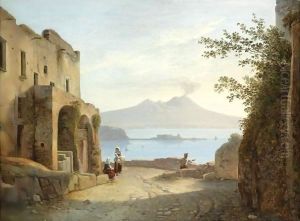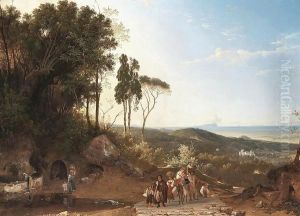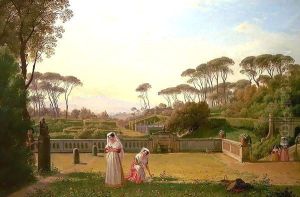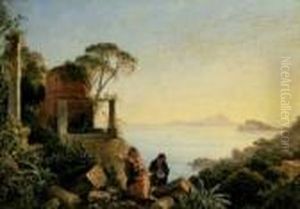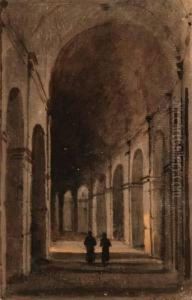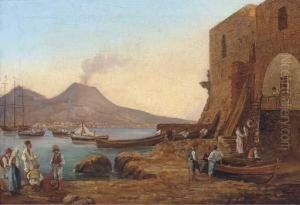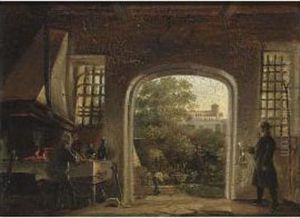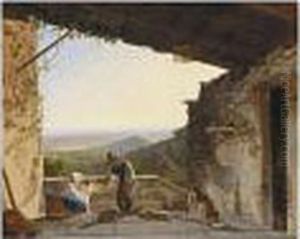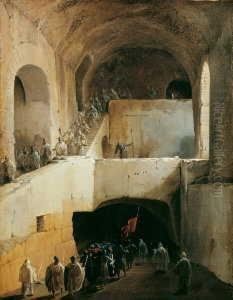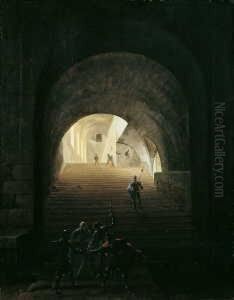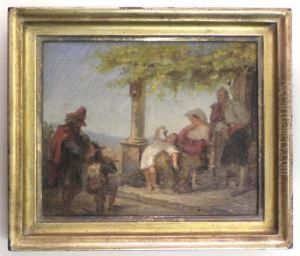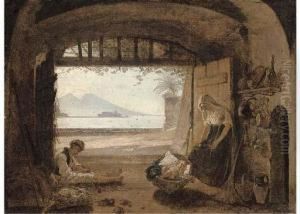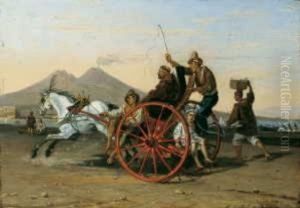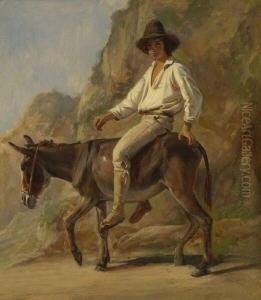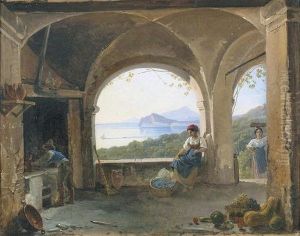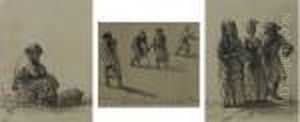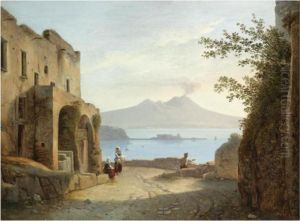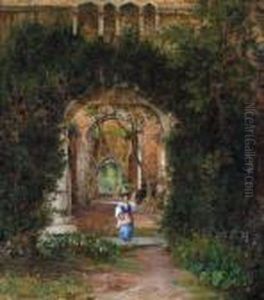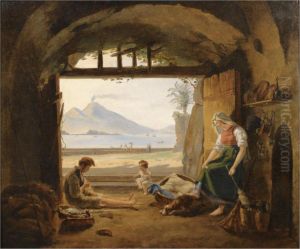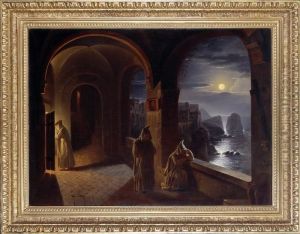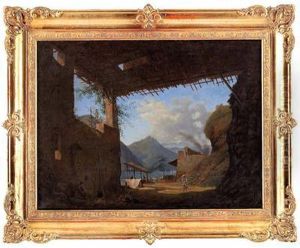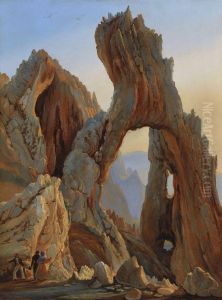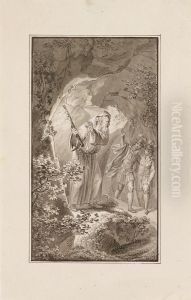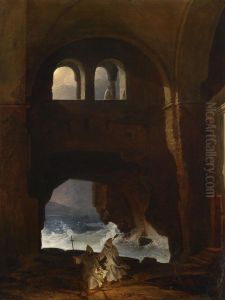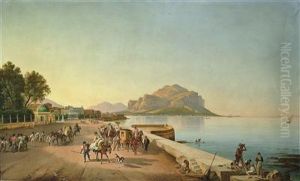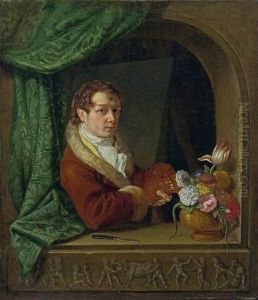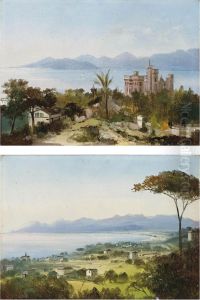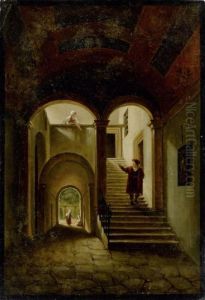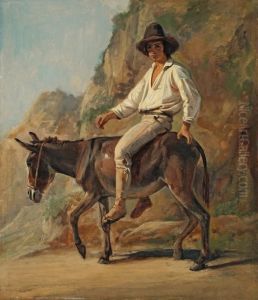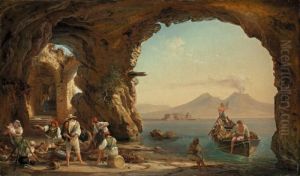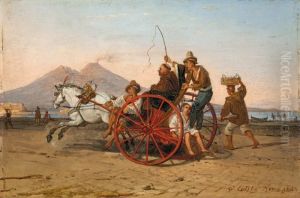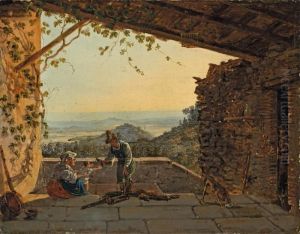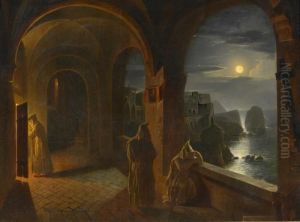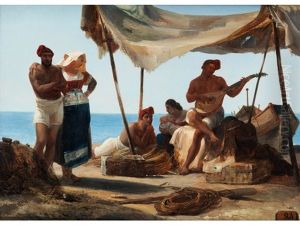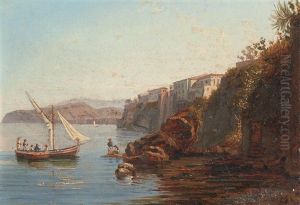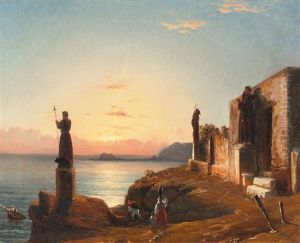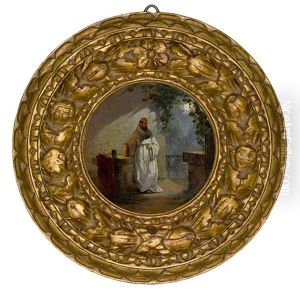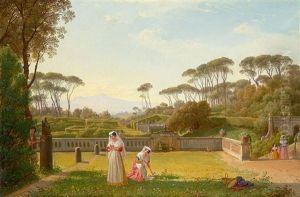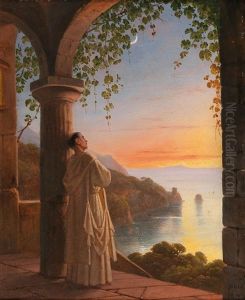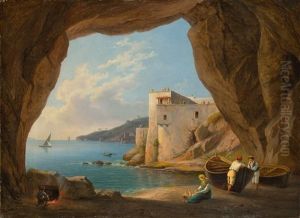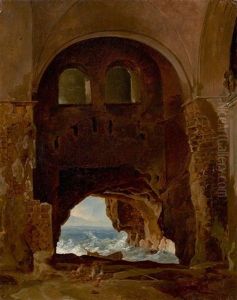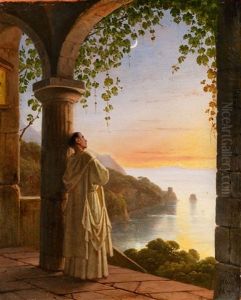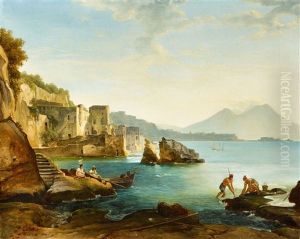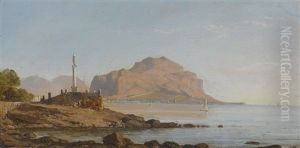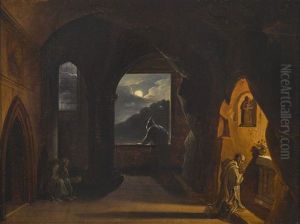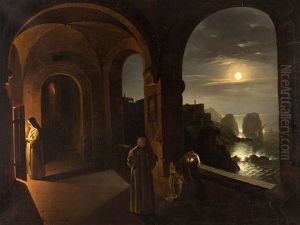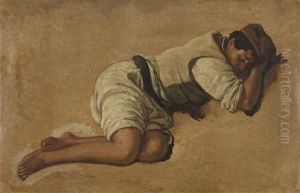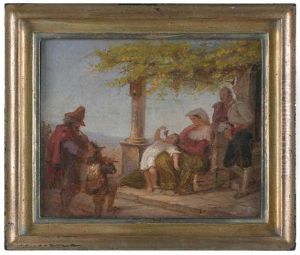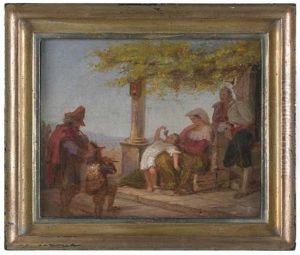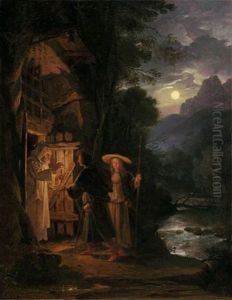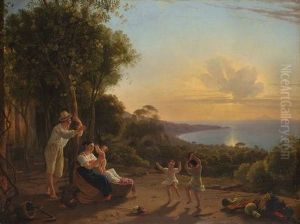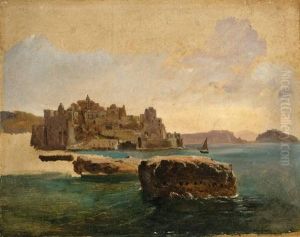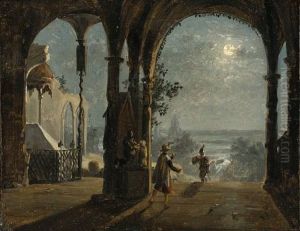Franz Ludwig Catel Paintings
Franz Ludwig Catel was a German painter born on February 22, 1778, in Berlin. He showed an early interest in art and was supported by his parents to pursue his passion. Catel's artistic talents were evident from a young age, and he initially received training from the landscape painter Bernhard Rode. He further honed his skills under the tutelage of the renowned artist Caspar David Friedrich, who influenced Catel's early works.
In 1807, Catel moved to Rome, which at the time was a hub for artists and intellectuals. The city's classical ruins and the vibrant artistic community greatly influenced his work. There, he became associated with the Nazarenes, a group of German Romantic painters who aimed to revive honesty and spirituality in Christian art. However, Catel's style was more eclectic, and he did not strictly adhere to the group's principles.
Catel quickly established himself in Rome and enjoyed the patronage of several influential figures. He became known for his landscape paintings, which often included historical or contemporary scenes. His works were characterized by their attention to detail, vibrant colors, and the incorporation of light to create atmospheric effects.
During his time in Italy, Catel traveled extensively, capturing the diverse landscapes and cityscapes of the Italian peninsula. His travels also took him to Sicily, Naples, and other parts of Southern Italy, where he was inspired by the natural beauty and the ancient architecture. He often depicted scenes of everyday life, blending the local customs and traditions into his landscapes.
Catel was also a keen portraitist, and his portraits are notable for their expressive characterizations and psychological depth. He painted portraits of several prominent figures of his time, as well as local Italian people, showcasing his versatility as an artist.
Franz Ludwig Catel's contribution to art was significant in that he provided a bridge between German Romanticism and the Italian landscape tradition. His work was received with acclaim during his lifetime and was exhibited in various prestigious venues. He remained in Italy for the rest of his life and died on December 19, 1856, in Rome. His legacy is preserved in the collections of many European museums, where his paintings continue to be admired for their beauty and historical value.
